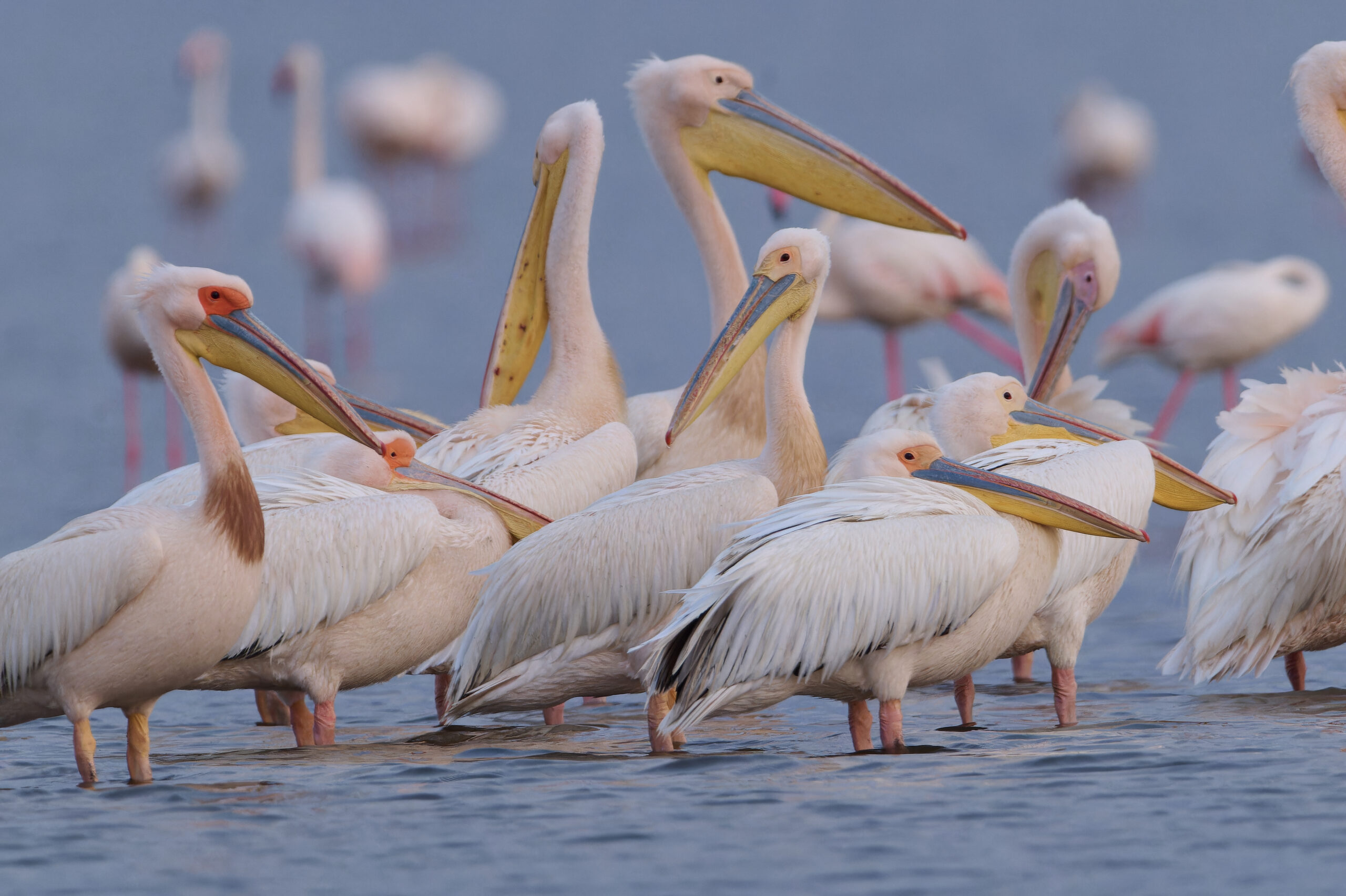A strongly alkaline salt lake in Tanzania. During the dry season, the lake’s color turns red due to cyanobacteria, which are caused by an increase in halophilic microorganisms. Only one species of fish inhabits the lake, but there are many species of birds, especially large flocks of little flamingos and greater flamingos. The lake is also visited by the Great White Pelican, shorebirds, and plovers.
What kind of birds can we see?
- greater flamingo
- lesser flamingo
- Great White Pelican
Access
Normally go by jeep from nearby camps or lodges. There is no paved path from the camp/lodge to the shooting location, so a guide is required. Along the way, giraffes and other animals can be seen.
Shooting locations and tips
- Most active around dawn.
- Some walks required after stopping jeep. (It is better to have trekking shoes because there are no paths in the walking area.
- Birds can be photographed at medium to long distances from the location, preferably with a 400~600mm lens. The coastal area is like a tidal flat, and shorebirds and shorebirds hanging around there can be photographed from a relatively short distance. Flamingos and pelicans hang out a little further away.
- The wind can be strong at times. Also, the tripod gets rather muddy due to the proximity of mud flats.
Related Blogs

